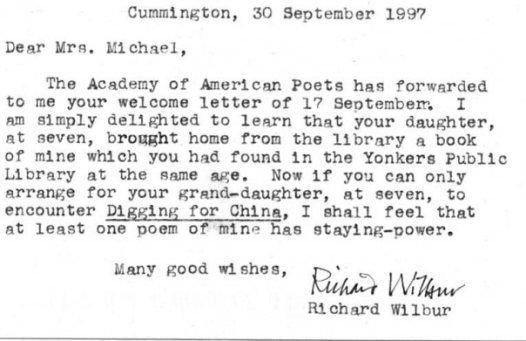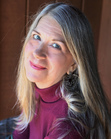Ann E. Michael's Blog, page 77
September 12, 2012
Poetry, art, & a little bit more about libraries
After writing about some memorable libraries lately, I realize that I have been able to pursue my passions–indeed, discover my passions–largely through the help of these marvelous civic institutions. It is time I brought my posts back to those passions, however, particularly to my love of poetry.
My family introduced me to poetry through nursery rhymes and hymns and taught me to love narratives through story-telling of several kinds, so the foundation for my lifelong love of stories and poems existed before I ever set foot in a library; but books solidified and focused my various enthusiasms, and libraries offered more books than I could hope to read (though I tried!). Libraries led me not only to novels and poems but to books on visual art, art museums, artists, art history, and art criticism. If I couldn’t get to the Louvre or Rijksmuseum, to Venice or to Rome, I could borrow an art book from the library and be on my way via imagination.
When I got to college, I spent many hours in the library on campus borrowing books I couldn’t afford to buy. Few of those books were required for my academic studies; in fact, I don’t recall doing much research for term papers. I was reading up on and diversifying my own interests, often unrelated to coursework. A look back at my undergraduate transcripts reveals only two classes specifically devoted to poetry, but I recall reading many poetry collections in the campus library. As a junior, I had a work-study job in an office in the library basement. When my hours were up, I’d walk upstairs to the stacks.
I was finding my own way to what I loved.
~
Needless to say, once I had children of my own, we visited the library often. Years ago, I wrote to the poet Richard Wilbur to tell him about my 2nd-grade daughter’s encounter with Digging for China and how, nearly 30 years earlier, I had been fascinated by the book too. He replied with this modest note. June 2009, I saw Wilbur at the West Chester Poetry Conference. What a talented writer, and what a sweet man.
~


September 9, 2012
Libraries & book love
In my last post, I drifted onto the topic of libraries–and stirred up images of favorite places. Libraries have certainly been among my favorite places and loom large in my childhood memories. Two of those libraries were new when I entered their doors: the Grinton I. Will Library in Yonkers, NY, which opened in 1962 (I first visited in 1964) and the W. Leslie Rogers Library in Pennsauken, NJ, which opened its doors in 1971. I recall a few distinct discoveries even from my first-grade forays to the Yonkers library. It was there I discovered Richard Wilbur’s Digging for China, a book I adored.
Free public libraries represent one of the best uses and most noble purposes of the tax dollars and philanthropic gestures of citizens in a democratic society. These buildings, some grand and some exceedingly modest, harbor banned books and out-of-print books and sections devoted especially to children’s books; a library admits of free speech and liberated thinking for people of all ages. A library, by its very existence, reminds citizens that education matters and that information can be free, can be borrowed, can be disseminated and shared.
When I was a child, libraries were safe places to hide, to explore, and to pursue my own interests–which often varied quite a bit from the interests of my peers. The library in Pennsauken offered me an early education on visual art. I probably borrowed every book in the place that had anything to do with art or artists, from Aesthetic Inquiry; Essays on Art Criticism and the Philosophy of Art to The Agony and the Ecstasy. The library stocked a book chronicling the letters of Theo and Vincent van Gogh as well as huge, 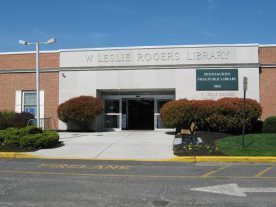 heavy, hard-cover museum books with color plates of famous artwork. Some of these were stamped more than a few times with my library card’s number.
heavy, hard-cover museum books with color plates of famous artwork. Some of these were stamped more than a few times with my library card’s number.
I also borrowed, and read–enthusiastically and, occasionally, dutifully–classic novels that I had somehow learned I “ought” to read. I read a fair number of junky novels, too, and young adult fiction, and children’s books. Even though I was nearly ten when Leo Lionni’s Frederick was published, I loved it and never considered it a “little kid’s book.” Interestingly, Frederick the mouse gathers images and turns them into words. He is a poet. (A word-artist).
Books: Anything, everything, as bibliophile overlaps with autodidact.
Books were my first and often my best teachers, though I have been fortunate enough to have had some wonderful teachers (formal and informal) in my life. One of them, my grandmother Edna Michael, will always be closely associated with libraries in my heart and memory. She was the Story Lady at her small-town library in South Whitley, IN; and my siblings and I spent many hours in the small white building that housed South Whitley’s free circulating books. We read, and we listened to her read. She would don “an olden-times dress” she’d designed and sewn herself, tie on a large matching bonnet, and gather the town’s youngsters in a circle on the library floor for story time.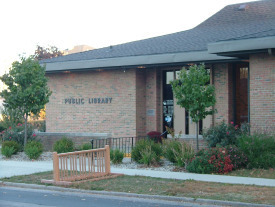
She always left the library with at least a couple of grownup books for her own reading material. I was proud to be like her.
A few years ago, the town enlarged its library, added a new children’s wing, and dedicated it in my grandmother’s name. Edna Michael, the Story Lady.
I’m pretty proud of that, too.

The South Whitley Library as it was in 1967, with my grandmother in her Story Lady attire.


September 7, 2012
Autodidacts & higher education
An early-morning drive to work, low sun gleaming through the remnants of fog, Vivaldi on the radio: Concerto for Two Cellos, a deeply mellow, haunting work of music…and I tried to recall my first encounter with Vivaldi’s music. I am quite sure it was an old Angel Records LP of The Four Seasons in my parents’ modest record collection. When I was old enough to read, I was curious enough about the music to study the record cover, where I learned that Vivaldi was born in 1678 in Italy and had red hair. Our ancient set of encyclopedias (The Book of Knowledge) said he taught music to little girls in convent school. These details, which taught me little about baroque music itself, nonetheless appealed to me as a child who wanted stories. The music seemed to tell me stories, as well–thunderstorms, blizzards, birds at daybreak, mountain streams, slow rivers in the summer sun.
Because I wanted stories, because I sought information and details, I turned to what seemed to me the most obvious place: the library. For three years of my early reading life, that was the Yonkers Public Library’s “new” branch, which seemed impressively modern at the time and which had a fabulous children’s area.
Why I associate Vivaldi with colored light filtering through the clerestories of the library, I don’t know. That’s just how memory works. I also associate my visits to the children’s room at the library with the beginnings of a lifetime of self-teaching through books, music, museum-going, travel, art, conversation, observation, research, and writing. That connection is a little easier to make. Because I was an introverted child, I watched more than participated in the events going on around me. When I wanted to know more, I was often too shy to ask–so I tried to find the answers myself in the place I imagined to be the best repository of stories and information. It was also the only place I knew that could offer such knowledge.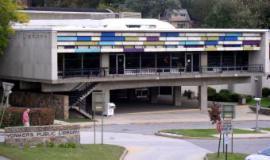
This brief explanation suggests that I became an autodidact because I was socially maladaptive. Or maybe because I was passionately curious about the world. Or because the library room was so magical.
Any of which may be at least partially true. But what I want to say in this post–far too briefly because the idea deserves further reflection–is that while I work in an institution of higher learning and while I believe in the value of higher education, I also believe we can educate ourselves exceedingly well without college degrees. Lack of a degree can limit people in the job market, no doubt; yet some of the most intelligent, interesting, best-educated people I know happen to be largely self-educated. The autodidact has the motivation of personal passion and the ability to be directed by chance and interest, not just to be guided through coursework considered culturally or economically valuable. Most of my older friends have become wise and clever by attending the school of hard knocks and through their personal curiosity and inventiveness; they are true autodidacts, even the ones who actually do have PhDs…but especially the ones who don’t.
Can I go so far as to suggest that we need our libraries more than we need our universities? Why not? I think I started my “college education” when I was six or seven years old because I had the desire to know, the curiosity, the interest. My parents encouraged me, which helped. (For one thing, I could not have gotten to the library if my mother hadn’t taken me there!) Some of my school teachers were also encouraging, but their encouragement mattered surprisingly little. What made the difference was the reward of finding something new, learning a new story, adding details to a foundation of things that interested me.
One of my tasks as a teacher, a poet, and as a mother is to foster that element of excitement when I sense it in someone and to encourage self-directness in each person’s education. Delight: a crucial ingredient in learning that can take awhile to locate but that will motivate a lifetime of knowledge-gathering. Maybe you can find it at the library, too.


September 2, 2012
A moment of self-promotion
It’s a busy week. I am glad to note that my local newspaper (yes, our area still has a local newspaper) published the following article about my new book, Water-Rites. Many thanks to Collin Roche and Jodi Duckett at the Call.
Profile of Ann E. Michael in Allentown Morning Call.
Thanks for reading, and for everyone’s support for poetry.


August 27, 2012
Reasonable, calming…
 Campaign rhetoric is hardly deserving of the name. The commentator who attempts to persuade or question through the means of valuable, thoughtful rhetoric endeavors to avoid fallacies and ballyhooing. But such commentators are scarce as hen’s teeth. Apparently, we citizens of the USA are not considered intelligent enough, are not respected enough, by our politicians and their media handlers to be worthy of genuine discourse or reasonable argument. We are also far too emotional and prone to grand-standing and stereotyping, the media-savvy promoters must imagine. With a certain amount of dismay, I admit there may be some truth to that pathetic view of the average US voter; but I want to believe we are better than that.
Campaign rhetoric is hardly deserving of the name. The commentator who attempts to persuade or question through the means of valuable, thoughtful rhetoric endeavors to avoid fallacies and ballyhooing. But such commentators are scarce as hen’s teeth. Apparently, we citizens of the USA are not considered intelligent enough, are not respected enough, by our politicians and their media handlers to be worthy of genuine discourse or reasonable argument. We are also far too emotional and prone to grand-standing and stereotyping, the media-savvy promoters must imagine. With a certain amount of dismay, I admit there may be some truth to that pathetic view of the average US voter; but I want to believe we are better than that.
In the thick of a presidential election, therefore, I find it pleasant to retreat to the calming, reasonable, optimistic (though cautioning) prose of Marilynne Robinson. For those of you who, like me, feel a sickening pressure around the whole election brou-ha-ha, I suggest a few hours reading and re-reading her recent book of collected essays, When I Was a Child I Read Books. Robinson makes no secret of her perspectives as a Christian, Protestant, US citizen, and reasonable, thinking, person of letters (humanities canon through and through…). She also establishes how her perspective widens rather than narrows her views, offers her “gentler” interpretations of the Old Testament and of Calvin’s writing and teachings, and argues her opinion with an erudition, elegance, simplicity and wisdom that is exceedingly rare today, particularly during presidential election years…and among people identifying themselves as “Christians.”
In “Open Thy Hand Wide,” Robinson parses the difference between rationality and reason and reminds us of what the word “liberal” originally meant (and how its meaning has changed and become vague). By the way, though a rational person in terms of her use of rhetoric, Robinson is squarely in the arena of reason, which she defines — with sources, thank you — as less numerical and more courageous and intuitive, ie human, than the merely rational.
Is her work ever political? Is it ever not political? It depends upon how one defines “political.” Robinson is deeply engaged with the human community. I think she would agree with Lewis Mumford on the city’s best purpose as being there to protect the welfare of its citizens, even the least of its citizens, and would agree that one of the most significant values of civilization is the creation of art. Certainly she here asserts that the highest purpose of nationhood is to establish justice (civic, human justice), to keep domestic peace within the nation itself, to secure freedom and liberty for all members of the society equally, and to keep the populace safe while promoting the common welfare of all the people.
I believe she is well aware–though she doesn’t say it even once in this book–that this stance makes her a classic patriot, a defender of the US Constitution, even as it also means that she can easily be branded a “liberal” for her well-argued stance that the USA was not established as a capitalist nation but as a generous democratic one devoted to the public welfare (ie, “good”), and what the difference between those theories are.
Just a week or two ago, I visited the US Constitution Center in Philadelphia. The performance offered there (“We the People”) and the interactive and non-interactive exhibit halls do a good job of reminding US citizens that the Constitution is a living document that established a government like no other before it, a document amenable to change and interpretation even as it establishes fundamental rights. Let us look at the Preamble and connect it with Robinson’s essays and ideas:
“We the People of the United States, in Order to form a more perfect Union, establish Justice, insure domestic Tranquility, provide for the common defence, promote the general Welfare, and secure the Blessings of Liberty to ourselves and our Posterity, do ordain and establish this Constitution for the United States of America.”
Reasonable. Generous–even Liberal. Secure for the people–no caving in to irrational fears; offering human justice because divine justice is not for us to determine; defense, not aggression; attentiveness to the general welfare (not of the privileged few)…and liberty: the chance to live as safe a life as God and the randomness of earthly environments allow without the oppression of other human beings to weigh us down.
You really have to read Robinson’s measured, calm prose and clear reasoning to feel the optimism; I cannot do it justice. I will just say that reading her book has made me feel much less depressed during a time when lack of discourse and logic has made me almost lose my hope about the democratic process.
Molte bene, Marilynne.


August 23, 2012
A great din
My friend Ann sent me this link to an NPR story on cities (Adam Frank on “The City as Engine”).
Frank closes on a note similar to Mumford’s closing chapter: “We live at a moment when cities are poised to become the dominant mode of human habitation on the planet. But we don’t yet know if such a mode can be made sustainable for more than a century or two.”
An earlier observation of his got my attention, however. He says–
There is a word that applies to the sound of cities which almost never gets applied to nature: “Din.” The din of cities heard on the rooftop as a rising wall of noise is a testament to the true nature of cities as engines of organization and dynamos of disorder.
The first time I became aware of this din of acoustic entropy, I was sitting across from Manhattan on the cliffs of Weehawken, N.J. It was night and the great city was blazing from horizon to horizon. Its low rumble of noise flowed like a breeze blown at me from a mile away across the dark river.
The reason this stopped me is that just a fortnight ago, I heard the word “din” applied to nature.
One of my nephews had just arrived for a visit. He’s been living at Oxford, attending school for several years at that ancient and venerable British institution; and he grew up in England outside of London in the suburbs (Buckinghamshire). My husband retrieved Max at the airport in the evening, and they arrived at our place past dark. We live in a semi-rural area of eastern Pennsylvania where we are surrounded by fields, meadows, woodlots, state roads, and the inevitable housing development. And it is August, a lively time for insect life.
As we unloaded my nephew’s luggage from the car and walked him toward the door, he stopped and looked about curiously. “What is that great din?” he asked, “Is it birds, this time of night?”
Din?
He was referring to the cicadas and crickets (and probably a few tree frogs and the occasional flying squirrel). I suppose they do make quite a racket, though we are accustomed to the noise–the ‘dynamos of disorder,’ as Frank would say. When we explained, he remarked, “Oxford is quiet. But I do realize it is its own peculiar world.”
Nice to know there are pockets of organization somewhere: no acoustic entropy at Oxford.
Nonetheless, I treasure our noisy regional denizens and prefer their din to the roar of motorcycles, trucks, and cars that speed past on the state road, although those noises have their own associations and dynamics and perhaps charm…the way I still find the sound of trains appealing because it reminds me of my childhood summers at my grandparents, I can imagine there are people who associate the rumble of vehicles and the great acoustic roar of cities with pleasant things.
Here is a photo of a cicada. A colleague says they are “the ugliest bugs in the world.” This one doesn’t look so awful to me.
Din, discord, or music. Ugly or appealing. To each his or her own.

http://animals.howstuffworks.com/inse...
“Why are cicadas so noisy?”


August 21, 2012
Language & teaching
I’ll be teaching a new crop of freshman writing students tomorrow morning. A thought lingering in my mind as I prepare myself mentally for the first classroom contact with these 17- to 19-year-olds concerns language, and an ongoing argument about its uses and origins. The argument is part semiotics, part linguistics, part sociological, part neurological, part cultural, part philosophical: what is the relationship between language and the human thought process? It’s sort of a chicken-and-egg question. Bruner, Goodnow & Austin, in 1956, characterized the two main theories at that time as “mould theories” in which language is “a mould in terms of which thought categories are cast” and “cloak theories” that hypothesize language is “a cloak conforming to the customary categories of thought of its speakers.”
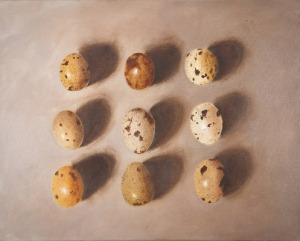
Annie Abdalla: http://www.annieabdalla.com/artwork_e...
In other words, does the language make us who we are/how we think (culturally), or does our culture make our languages reflect the cultures in which we live?
The famous Sapir-Worf hypothesis theorizes that we experience the things we do, and speak about them to others in our community, because our language habits incline us towards certain interpretations. It is therefore a mold theory. Worf wrote, in 1940, that “We dissect nature along lines laid down by our native languages.” Ie, if our culture values, say, coloration, our metaphors and cliches and descriptions would be largely based on color-values. In a more recent essay by David Chandler,* the author points out that this sort of interpretation of what language is can be interpreted in so relative a fashion that every form of linguistic communication, even with in a culture, becomes a kind of translation. Chandler finds this situation “problematic.”
Problematic, perhaps. But incorrect? I’m not so sure. It seems to me that our very individualist U.S. culture offers so many personal and sub-cultural perspectives that even everyday commerce and chit-chat involves constant translation. One of the most challenging things I have to teach to my students is how to understand what their college professors want from them, which is largely demanded in terms of a vocabulary that is not just academic jargon but which is connotative in ways most incoming freshmen cannot know; they have seldom or never been exposed to that perspective. It is not part of their culture.
So does that make language a cloak or a mold?
Probably–as in most things–moderation serves best. The answer is not either-or, but a bit of both, because the human brain–and human culture–is so commodious and adaptable and complex. Chandler promotes “moderate Worfianism.” That’s another one of those rather irritating academic -isms, but what he means is: “Meaning does not reside in a text but arises in its interpretation, and interpretation is shaped by sociocultural contexts.” This theory affects my role as educator even when I am teaching the introduction to academic writing and rhetoric class rather than some higher-level analysis course. More so, in some ways, because the introductory course is where students learn to question their socio-cultural assumptions as they read and write. I have to learn their slang, their habits, their leisure activities and distractions in order to make compelling analogies that work for them. They have to learn to transition into academic and business-world conventions from their peer-oriented and narcissistic teen environments.
It is a form of translation.
It is also an opportunity for new perspectives, for my students and for me. Wish us luck!
~
*David Chandler, “The Sapir-Worf Hypothesis” UWA 1994 (from The Act of Writing)


August 20, 2012
Entrance

Wasp’s nest: Entrances abound, but are hidden
Not Writing
A wasp rises to its papery
nest under the eaves
where it daubs
at the gray shape,
but seems unable
to enter its own house.
–Jane Kenyon
This poem is so succinct and so artfully constructed. Haven’t we all had that daubing frustration of madly circling and yet not being able to enter in to where we need to be?
~
Above, a lovely Jane Kenyon poem and a brief, relevant post from Deborah Barlow, artist, from her blog Slow Muse.
August 18, 2012
Philosophy of cities
I’m going to let the late Lewis Mumford speak for himself in a couple of excerpts from The City in History. Even though I love history and have perused many a book on the subject(s), I learned a great deal about Western history from this book. What intrigues me most as I’ve read, though, is Mumford’s roles as historian-as-sociocultural-critic and historian-as-philosopher. When writing a book of this scope, no matter how founded on data, archeological and textual records, it’s hard for this writer to avoid thoughtful forays into philosophy. Mumford looks forward, too, speculating on city life in the future–and he takes rather a dim view of where megalopolises were heading in 1961. He was prescient indeed. While today’s citizens may argue that his judgments are overly negative, it is difficult to refute the accuracy of his speculations, particularly when he foretells the modern city’s environmental impact on society and on earth’s resources.
So much of the book is a warning: cities have a tendency to collapse, and there are reasons for that. Such reasons have to do with greed, power, poorly-applied technology, lack of foresight, overcrowding, ignorance of the need for balance in any system–governmental, agricultural, environmental, social, economic, etc. He sounds like a Cassandra at times, and we all know that aphorism about being doomed to repeat history, as does Mumford. But ultimately, he makes a passionate call to creativity and human life, warning us not to let our burgeoning technology reduce human activity to the level of the hive. He revels in the arts, in the conscious purpose of human living, in the genuine communication among persons, and in the joys available to those who understand an organic system must be balanced.
[He refers to men and mankind using the typical non-gender-neutral language of the era, which I am not going to alter in these excerpts.]

A bit of green…
Here he is discussing the “Green Matrix.” Remember, he’s writing in 1961!
~
“The maintenance of the regional setting, the green matrix, is essential for the culture of cities. Where this setting has been defaced, despoiled, or obliterated, the deterioration of the city must follow, for the relationship is symbiotic. The difficulty of maintaining this balance has been temporarily increased, not merely by the incontinent spread of low-grade urban tissue everywhere, dribbling off into endless roadside stands, motels, garages, motor sales agencies, and building lots, but by the rapid industrialization of farming itself, which has turned it from a way of life into a mechanical processing business no different in content or aim or outlook from any other metropolitan occupation…”
~
Following Mumford’s observation that overpopulation is often a result of privation, rather than the expected other way around, and leads to the “bursting” of the city as a healthy, organic system, he notes (with clear reference to his much earlier chapters on the decline of Rome):
“No profit-oriented, pleasure-dominated economy can cope with such demands: no power-dominated society can permanently suppress them. Should the same attitude spread toward the organs of education, art, and culture–man’s super-biological means of reproduction–it would alter the entire human prospect, for public service would take precedence over private profit, and public funds would be available for the building and rebuilding of villages, neighborhoods, cities, and regions on more generous lines than the aristocracies of the past were ever able to afford for themselves. Such a change would restore the discipline and the delight of the garden to every aspect of life; and it might do more to balance the birthrate, by its concern with the quality of life, than any other collective measure….significant improvements come only through applying art and thought to the city’s central concerns, with a fresh dedication to the cosmic and ecological processes that enfold all being…the best economy of cities is the care and culture of men.”
The care and culture of “men” meaning, “human beings”: that’s a lovely purpose, a noble one, and one too many people tend to forget as we occupy ourselves with the busy-ness of our own isolated lives.
~
Of note: The USA’s 50 “greenest” cities…which does not mean they are good cities by Mumford’s definition, but which is probably a good start. Click here.


August 14, 2012
Short books and re-reading
~
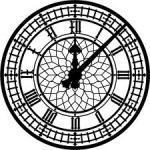 When life gets busy and over-scheduled, even an inveterate reader may find she has to give up some of her precious book time to life’s other adventures and responsibilities. Philosophy and meditation require enough time for reflective, slow thinking; a hectic week precludes such activities. Creative thinking gets funneled into problem solving of a more mundane and practical variety. Creative writing? It may have to move, temporarily one hopes, to a back burner.
When life gets busy and over-scheduled, even an inveterate reader may find she has to give up some of her precious book time to life’s other adventures and responsibilities. Philosophy and meditation require enough time for reflective, slow thinking; a hectic week precludes such activities. Creative thinking gets funneled into problem solving of a more mundane and practical variety. Creative writing? It may have to move, temporarily one hopes, to a back burner.
Last week was one of those over-scheduled periods when I take advantage of brief, unscheduled minutes to read short books. The beauty of reading short books is that the best short books reveal depths upon re-reading–one of the beauties of poetry as well. And if those short books happen to be books of poetry? “More’s the better,” as my great-aunt used to say.
During my crazy week, I managed to read three short collections of contemporary poetry, all by poets with whom I am personally (if marginally) acquainted. All three books are wonderful: layered, varied, well-crafted, interesting, moving, refreshing, surprising reflections on and of modern life with enough empathy and reach toward the “universal” to keep the poems valuable beyond today’s context. All three books are going on my re-read list so I can study and savor them again later, yet each collection is vivid and entertaining enough to read when crunched for time.
~
Will Greenway’s 1999 collection Simmer Dim was published by University of Akron Press and offers the reader a travelogue to many places in the world without as well as the more interior worlds of memory, relationships, and reflection. Greenway writes in both free verse and in rhyme, which he employs so well it seems natural even in the informal diction his work often takes.
April Lindner’s 2012 collection This Bed Our Bodies Shaped was published by Able Muse this summer. The poems offer the sense of a personal speaker, suggesting intimacy that is revealed subtly through well-crafted lines and images of flowers, scene-settings, and allusions from the classic to the modern (rock n roll). Lindner presents the woman’s perspective as individual, surprising, and non-stereotypical; when she writes about jobs, a lover, motherhood, or menopause, her observations are often quirky but wonderfully observed.
Elaine Terranova’s 2012 collection Dames Rocket was published by Penstroke Press. I love Elaine’s work, steeped as it is in the natural world, plausible and tactile, yet positively ascendant in tone. Her memoir-type poems evoke the kind of childhood that is fast becoming historical, and her awareness of that fact–the fact of aging–gives these pieces poignancy and occasional irony.
~
All three books are also available on Amazon.com. Or ask your librarian to locate a copy for you.



